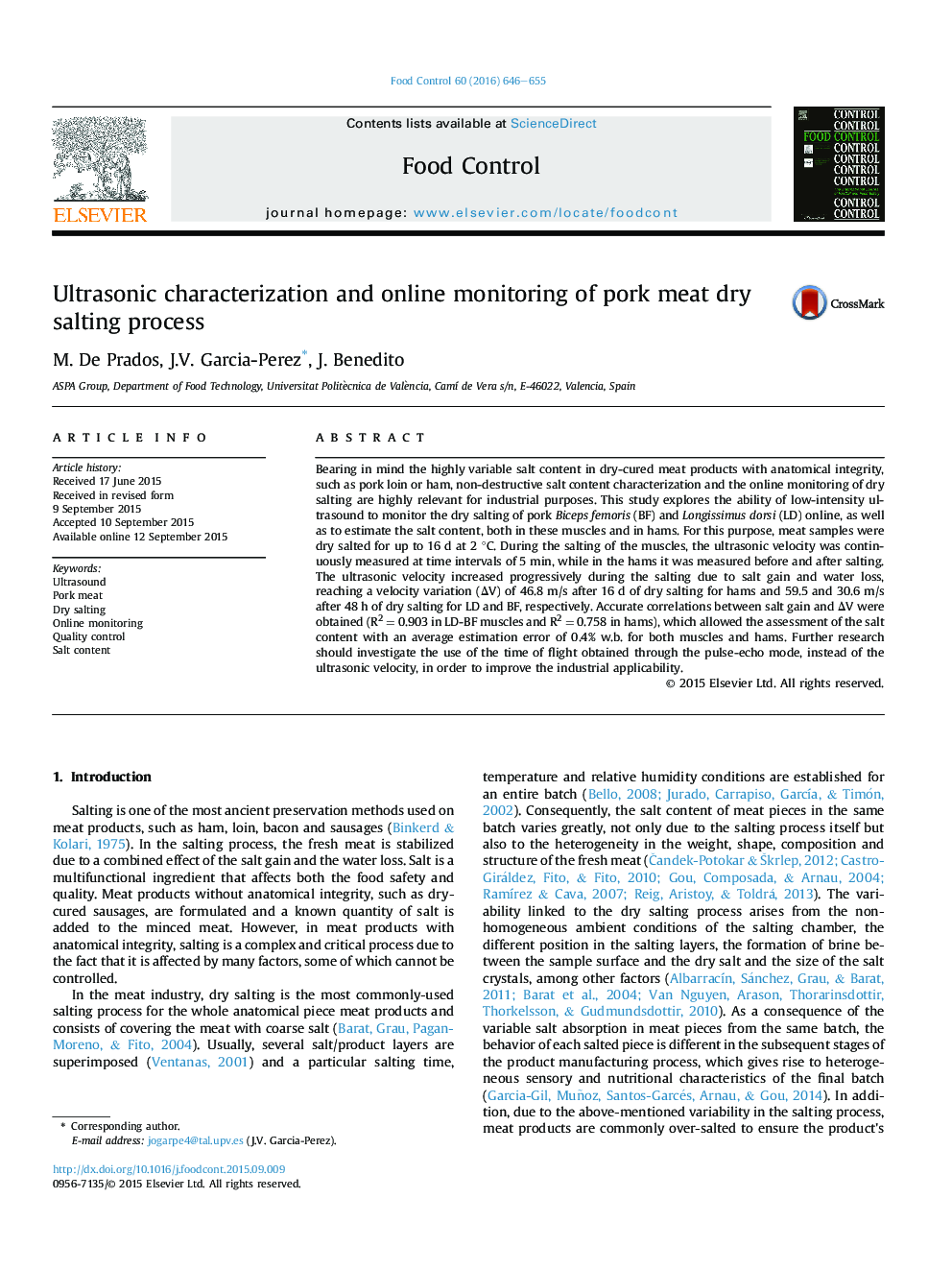| Article ID | Journal | Published Year | Pages | File Type |
|---|---|---|---|---|
| 6390374 | Food Control | 2016 | 10 Pages |
Abstract
Bearing in mind the highly variable salt content in dry-cured meat products with anatomical integrity, such as pork loin or ham, non-destructive salt content characterization and the online monitoring of dry salting are highly relevant for industrial purposes. This study explores the ability of low-intensity ultrasound to monitor the dry salting of pork Biceps femoris (BF) and Longissimus dorsi (LD) online, as well as to estimate the salt content, both in these muscles and in hams. For this purpose, meat samples were dry salted for up to 16 d at 2 °C. During the salting of the muscles, the ultrasonic velocity was continuously measured at time intervals of 5 min, while in the hams it was measured before and after salting. The ultrasonic velocity increased progressively during the salting due to salt gain and water loss, reaching a velocity variation (ÎV) of 46.8 m/s after 16 d of dry salting for hams and 59.5 and 30.6 m/s after 48 h of dry salting for LD and BF, respectively. Accurate correlations between salt gain and ÎV were obtained (R2 = 0.903 in LD-BF muscles and R2 = 0.758 in hams), which allowed the assessment of the salt content with an average estimation error of 0.4% w.b. for both muscles and hams. Further research should investigate the use of the time of flight obtained through the pulse-echo mode, instead of the ultrasonic velocity, in order to improve the industrial applicability.
Related Topics
Life Sciences
Agricultural and Biological Sciences
Food Science
Authors
M. De Prados, J.V. Garcia-Perez, J. Benedito,
